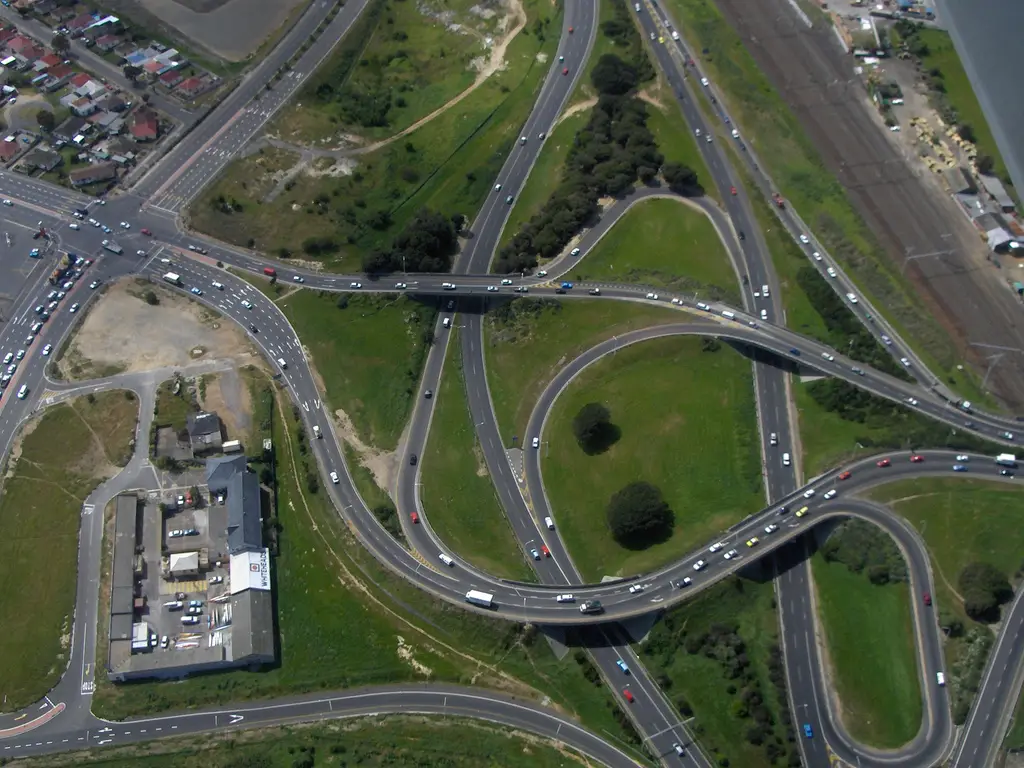 Koeberg Interchange Phase 1 bags top prize.
Koeberg Interchange Phase 1 bags top prize.
Construction World’s prestigious Best Projects Awards was held for the 10th time late last year at the Royal Johannesburg and Kensington Golf Club in Linksfield, Johannesburg. Seventy entries competed in the six categories of the awards.
The awards evening was attended by more than 220 guests and has cemented its reputation as one of the most prestigious awards for the construction industry.
The projects were judged by Trueman Goba, executive chairman of Goba Consulting Engineers; Rob Newberry, MD of Newberry Developments and Colin de Kock, former executive director of the Gauteng Master Builders Association.
The judging
The judges commented that the standard for this year’s competition was high and the competition extremely tough. In certain categories, special mentions and one or more highly commended awards were given – an indication that there was often a marginal difference between deserving projects.
The judges scored entries based on the criteria for each specific category and these scores were adjusted on a weighted average basis to ensure equitability across all entries.
Entries were judged according to the criteria for each of the categories as set out in the call for entries. Categories A, A1, C and D shared the same criteria, which were:
Construction innovation technology,corporate social investment, design innovation,environmental impact consideration, health and safety, quantifiable time, cost and quality, and risk management.
Category B1 had four judging criteria, similar to the first four above, while category B1 had the above criteria bar ‘construction innovation technology’.
The Koeberg Interchange
The winner of the civils category was the Koeberg Interchange which is the largest road project by value commissioned by the Western Cape Provincial Administration. It s completion marked the end of some of the worst traffic snarl ups in Cape Town at the junction of the N1 and M5 highways.
The project
The project which was undertaken by a JV between Group 5 and Power Construction had the provincial government of the Western Cape as the client, which owns the N1 from Salt river to the R300 (including the Koeberg interchange).
According to Group 5, the project involved the construction of elevated linking overhead Ramps A and B (each +-650m long), one in each direction over the existing interchange, that provide a free flow of traffic, between the N1 and M5 highways and which also include two cast in-situ bridges (each 67m unsupported span over eight rail tracks). Reinforced Earth structures with in-fills formed the on and off ramps to the elevated overhead Ramps A and B.
The N1 has two extra lanes added to the outbound carriageways between the Interchange and Sable Road and one extra lane on the N1 incoming between Sable road and the Interchange, while the Salt River Canal was moved 15 m to the west so as to accommodate the widening of the M5 Viaduct to accommodate an additional lane in each direction. Asphalt milling and overlays to the existing roadways in the Interchange were also done.
Record breaking
The project boasts the longest precast bridge U-Beams in Southern Africa at 40 metres in length and 70 tonnes in weight each, while the Pre-stress tendons in PC Beams and in-situ bridge sections on this project amounted to 560 km of strand. During construction an enormous temporary “mechano set” gantry over a 8 rail line servitude to support an in-situ post tensioned box deck clearing a rail span of 67 meters had to be erected.
Challenges
According to Group 5 who were involved in the project, accommodating 200,000 vehicles passing the interchange daily and relocating existing services without proper records were only some of the challenges that had to be surmounted, in addition to moving of the Salt River Canal in a winter rainfall area and transporting and positioning of very large and heavy precast bridge beams which was mainly carried out at night, during periods of reduced traffic flow.
Work on the project started in 2008 and ramp A was opened to traffic in time for the start of the world cup in 2010. Ramp B was opened in July 2011, 5 months ahead of schedule. The balance of minor works was completed before the deadline of end November 2012.

